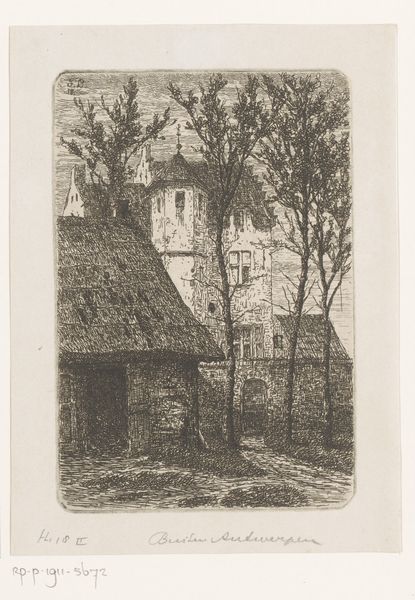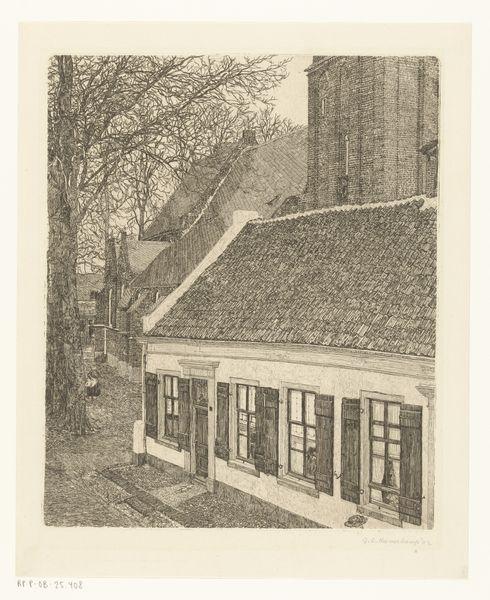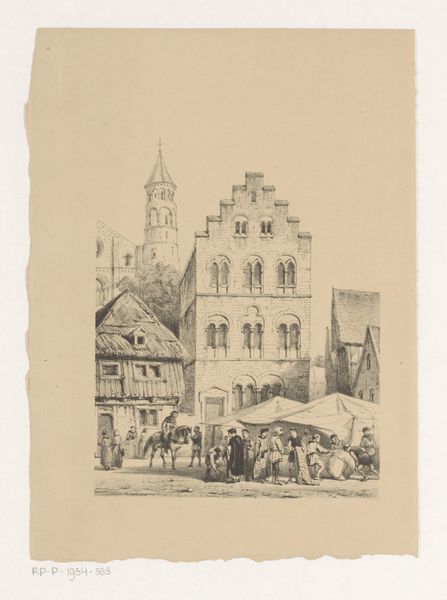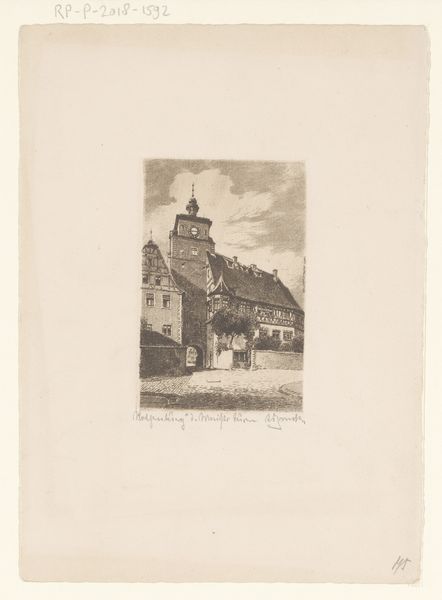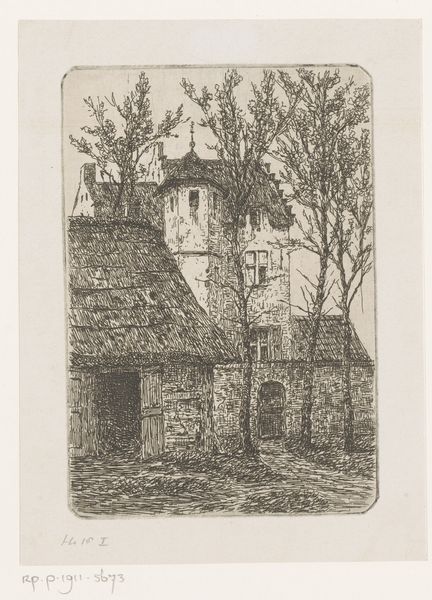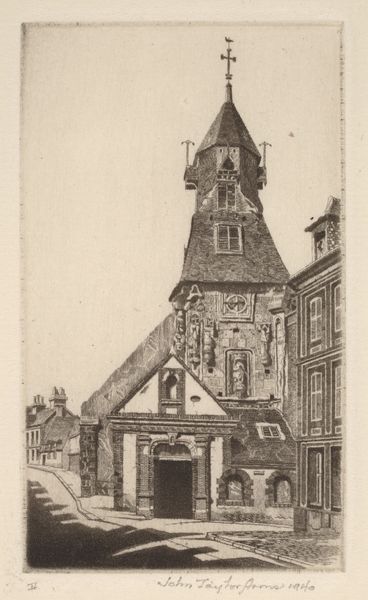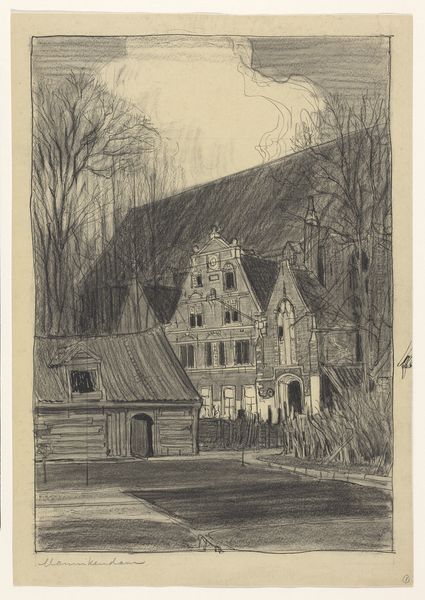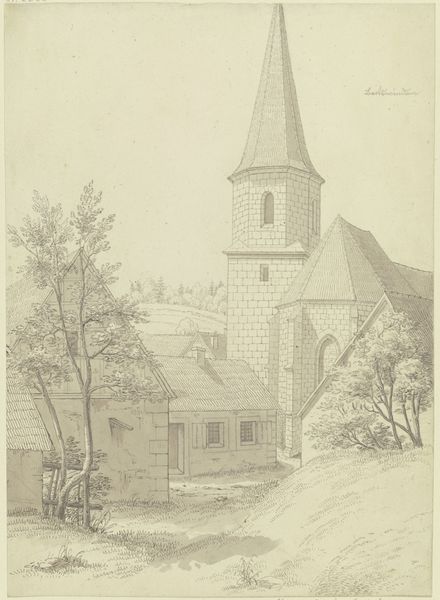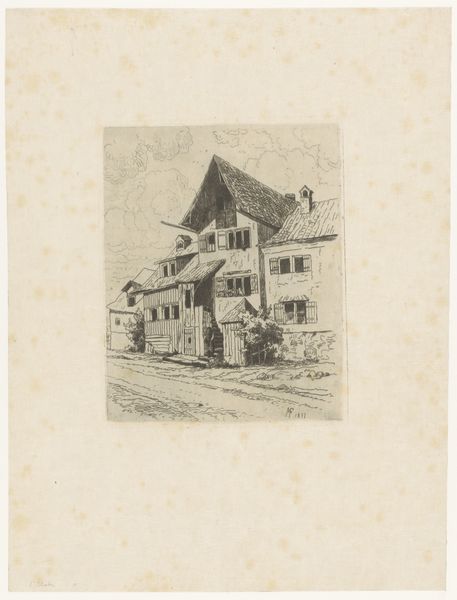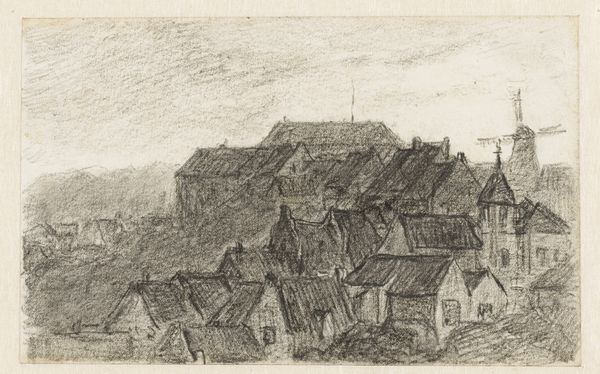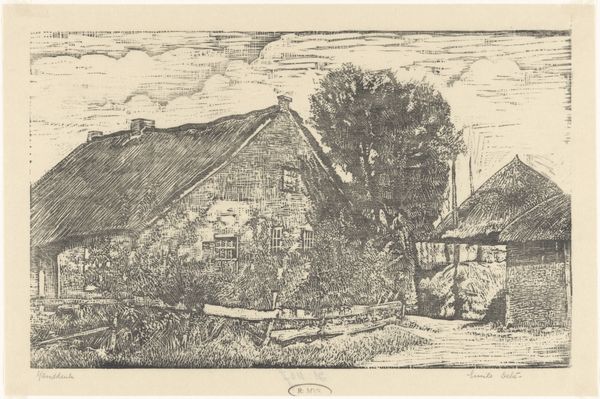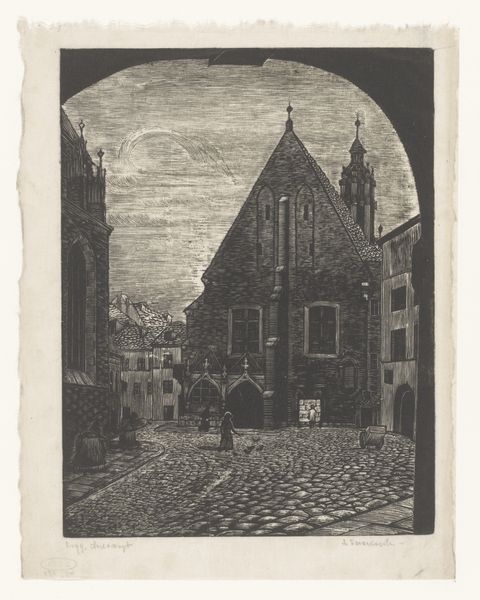
print, etching
# print
#
etching
#
landscape
#
cityscape
Dimensions: height 150 mm, width 100 mm
Copyright: Rijks Museum: Open Domain
Curator: This etching by Frederik van der Harst, titled "Oude omwalling, Maastricht," probably dates to before 1947, and presents an old city wall with buildings looming behind. Editor: The texture is so palpable, the bricks rendered almost photographically, yet a prevailing melancholic mood hangs over this quiet cityscape. Curator: Yes, the medium of etching lends itself so well to this sense of faded grandeur. Think about the concept of the city wall itself – its function was to demarcate and protect, representing power dynamics both within and beyond the city limits. Editor: The spire rising in the background behind the building almost acts like a visual echo of some collective aspiration beyond these very terrestrial bounds. The building looks to me like city hall or possibly an old schoolhouse. Curator: Quite possibly! Van der Harst was interested in documenting urban space as a place of living, so that it is the realm where inhabitants go to negotiate daily realities through architecture, culture and memory. The architecture and fortifications in Maastricht can certainly become legible through gendered lenses, and racial tensions are not uncommon between insiders versus the foreign ‘outsiders’ from abroad or other villages and cities, looking to enter Maastricht as documented in colonial theory and diaspora studies. Editor: And those walls, they’ve seen so much, haven’t they? The artist directs our gaze through history and place. The wall acts as a visual anchor, a memory-holder… Curator: I’m fascinated by that broken section of the wall foregrounded in the image. The physical rupture hints at a breakdown of past power structures or suggests permeability, offering us a lens through which to question notions of rigid borders and controlled movement. The artist makes use of the wall as both physical barrier and portal in considering how people navigate power dynamics. Editor: Indeed. By representing that crumbling corner of that protective stone we find both power and fragility interlaced, allowing viewers a path through memory in and out of the space contained inside the fortification itself. Curator: It provides critical points of access as the narrative suggests ways that citizens interact with societal structures – either adhering to dominant ideology or dissenting against those standards. Editor: A remarkable work – quietly resonant, I find. Curator: Absolutely. And a stark reminder that bricks and mortar speak volumes, if we take the time to listen and ask questions.
Comments
No comments
Be the first to comment and join the conversation on the ultimate creative platform.
